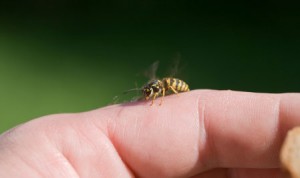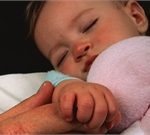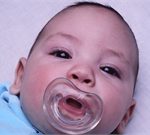Bites and Stings
 Inevitably your child will at some point or another be bitten or stung by something. This section is to help you find ways to manage the bite or sting, soothe your child and figure out when to contact your doctor. In the case of an insect bite or sting finding out which insect was the culprit is unlikely unless you witness the bite/sting or the bites follow a certain pattern. Ways to comfort your child and signs of complications– allergic reactions and infections- can be found at the end of this section.
Inevitably your child will at some point or another be bitten or stung by something. This section is to help you find ways to manage the bite or sting, soothe your child and figure out when to contact your doctor. In the case of an insect bite or sting finding out which insect was the culprit is unlikely unless you witness the bite/sting or the bites follow a certain pattern. Ways to comfort your child and signs of complications– allergic reactions and infections- can be found at the end of this section.
Animal and Human Bites
If your child has been bitten by a snake, wild animal or stray animal you should call your pediatrician immediately. If a stray animal has bitten your child and it is possible to safely capture the animal to test it for rabies, do so. If a snake has bitten your child, try to keep the bitten area immobile – using a splint if possible until you reach an emergency room. Do not apply ice and do not tie a tourniquet around a limb.
If your child has been bitten by another person or by a pet and the skin is not broken there is no risk of infection. If the skin is broken, wash the area with soap and water and call your pediatrician. Find out if the pet’s rabies vaccines are up to date. If the rabies status of the animal is unknown your child may need rabies immunoglobulin and rabies vaccinations. Your child may also need a tetanus booster if s/he has not had one in the past five years.
Animal and human bites have a high rate of infection so it is possible your pediatrician will want to start antibiotics right away.
Insect & Arachnid Bites
Mosquito: If you have been spending time outside, or it is a warm moist season, you will probably see mosquitoes and know if the bites you see are mosquito bites. They are pink bumps about the size of an eraser head, each separate from the next, usually on areas that were not covered by clothing. These bites are itchy and take 3-4 days to improve.
Fleas: If you have been in the sand (park, beach) or have pets, and if your child has many small pink itchy bumps, consider fleas as a possible cause. These bites occur most commonly on the legs in walking children, and on arms, legs and diaper area in crawling infants.
Ticks: There are many types of ticks. Ticks tend to be reddish brown and resemble a small flat spider. When a tick bites it attaches itself by burrowing its head under the skin in order to feed. Ticks can carry disease so it is important to remove a tick as soon as you notice it, and it is important to do so carefully so that the entire tick is removed.
To remove a tick: grasp the tick firmly with a pair of tweezers as close to your child’s skin as possible. Firmly and steadily pull out. Do not twist and try not to crush the head or body. If you live in an area where Lyme disease is prevalent, place the tick in a container and contact your child’s pediatrician. Although there are many tips about heating a tick, smothering it with Vaseline, oil, alcohol or nail polish, you should avoid these methods as they can make the tick burrow more deeply, they do not kill the tick quickly enough to make a difference, and they can sometimes cause the tick to release more fluid into your child’s body increasing the likelihood of disease transmission. If your child develops irritation at the site where the tick had been attached, treat according to instructions below. If your child develops a fever, flu-like symptoms, nausea or a rash that begins at the site and often looks like a bull’s eye, contact your child’s pediatrician.
Bedbugs: Bedbugs are very small, reddish brown, oval and flat. Typical bites are itchy, pink, flat or raised, in a line or cluster, usually on the face, neck, arms or legs. If you notice dark brown or reddish spots on the sheets this is a sign that bedbugs are present. During the day they hide in mattresses, bedding, cracks and crevices. If you do not see the bugs at night (sneak into the kids room with a flashlight to look in crevices, sheets, mattresses) and do not see the reddish brown spots on the sheets, or blood smeared on the sheets, contact your pediatrician during regular office hours to have the bites looked at. Eradication of bed bugs is tricky, so you want to be sure you are dealing with bedbugs before going down this path. You may need to contact a pest control company to help you manage an infestation if you do have one.
Scabies: Scabies is a rash caused by a mite burrowing under the skin. The bites can resemble those of both fleas and bedbugs. The rash typically consists of small blisters or pink bumps lined up in a row, and in children is found most commonly on the face, hands (both sides), soles of feet, neck, face and scalp. Itching can be worse at night with scabies, as it is with bedbugs. If you suspect scabies contact your child’s pediatrician during regular office hours to have him/her evaluated. Scabies is eradicated by specific home measures and prescription cream. Comfort measures are the same as those for insect bites (below).
Spider: Spiders usually only bite once. Occasionally they bite a few times and all of the bites will be in the same general area on the body. If your child has more than 5 bites, think of fleas or mosquitoes. Spider bites are more painful than itchy, and tend to get larger over a 2-3 day period of time. Often you will see a small dot in the center of the raised red area where the bite occurred.
Black Widow: The black widow is a spider that tends to live in dark protected areas close to the ground (woodpiles, outhouses, garages). It has a red hourglass shape on its belly. The bite of a black widow spider initially looks like a general spider bite, but then, within a few hours, your child might develop other symptoms: headache, nausea, vomiting, dizziness, tingling, numbness, muscle cramping or muscle twitching. If you know that your child has been bitten by a black widow, or if your child develops the above symptoms, call your pediatrician or go to the Emergency room immediately. If your child has swelling of his/her mouth or difficulty breathing call 911.
Brown Recluse: The brown recluse spider prefers living in dry dark areas (cracks, crevices, under rocks). It typically has a dark orange or brown violin shape on its head and has 3 sets of two eyes on the head (rather than the typical 4 sets of other spiders). The bite of a brown recluse looks different from other spider bites. The bitten area is a pink bump, but the center of it will be purple or blistered, and over time the blister will open and become an ulcer. If you know that your child has been bitten by a brown recluse spider, or if his/her bite has a blister or ulceration in the center, call your pediatrician.
Insect Bite Treatment
- Clean area with soap and water.
- Rinse with hydrogen peroxide.
- Apply a cold cloth or ice to numb the area and decrease itching.
- Apply antibiotic ointment (Neosporin, polysporin, etc) to any open/scratched bites.
- Apply hydrocortisone cream to bites to decrease itching – up to 4 times a day for 3-5 days.
- If your child is intensely itchy and uncomfortable, oral diphenhydramine (benadryl) can help (see medication dosing page). And keep his/her fingernails short to minimize scratching and the risk of infection.
Bee, Wasp and Jellyfish Stings – Care and Treatment
- Remove the stinger or tentacles: scrape or flick out, do not squeeze. The stinger of a bee is attached to a sac of venom and jellyfish tentacles contain venom so squeezing either will release more venom into the body. Use the edge of a smooth knife or credit card to remove the stinger or tentacles. If after scraping there is still a part of the stinger or tentacle in your child’s skin, grasp the end with tweezers to remove.
- Apply ice (wrapped in a cloth) to the area to minimize both the spread of venom and the pain. It is normal for the site to be red and tender.
- Local care – calamine lotion, hydrocortisone, meat tenderizer, and a baking soda paste (if at the beach make a paste of salt water and sand) may all help with the itching, pain and swelling.
- Medications – If your child has a lot of pain and swelling at the site you can use oral diphenhydramine (benadryl) to ease his/her discomfort (see medication dosing page).
If your child has signs of a full body allergic reaction – hives all over, difficulty breathing or wheezing, swelling of the lips, hands or eyes – go straight to the nearest emergency room.
If your child has ever had a severe allergic reaction to a sting, be sure to ask your doctor during a follow up office visit for an ‘epi-pen’. This is an injection that you will carry with you and which you will give to your child before heading into the emergency room if s/he is stung again. Your doctor may also talk with you about the possibility of giving your child regular shots to desensitize him/her.
Call/See a doctor immediately if your child has:
- Been bitten by a snake, stray or wild animal, black widow or brown recluse spider (as described above).
- Been bitten on the face or hand, or has a large open wound which may need stitches.
- Been stung by a Portuguese man-of-war
- Difficulty breathing or has swelling of his/her mouth
- A fever and the area looks infected – pus, increasing pain and redness, red streaks extending out from the bitten/stung area.
- Vomiting, numbness, tingling.
- **You feel that something is just not right – remember, no one knows your child like you do!
-Monique Araya, MD, FAAP
The medical information on this Web site is provided for educational purposes only. The information provided in this site, or through linkages to other sites, is not a substitute for medical or professional care, and you should not use the information in place of a visit, call consultation or the advice of your physician or other healthcare provider.
If you believe you have a medical emergency you should call 911 or your physician immediately. If you have any questions regarding your health or a medical condition, you should promptly consult your physician.
- Accidental Poisoning
- Bites and Stings
- Burns (and sunburns)
- Childhood Asthma
- Colic and Crying Babies
- Constipation in Children
- Cough & Cold
- Diaper Rash
- Diarrhea
- Ear Pain
- Fever
- Head Trauma and Head Injuries
- Kids and Allergies
- Lice
- Medication Dosages
- Nosebleeds in Children
- Pink Eye and Styes
- Rash
- Scrapes, Cuts and Stitches
- Sudden/Acute Abdominal Pain
- Treating a Common Cold Cough
- Vomiting and Nausea
 High Viral Loads Make Kids ‘Silent Spreaders’ of COVID-19
High Viral Loads Make Kids ‘Silent Spreaders’ of COVID-19 Clotting Tied to COVID-19 May Harm the Placenta
Clotting Tied to COVID-19 May Harm the Placenta ‘Kangaroo Care’ Has Big Health Benefits For Preemies
‘Kangaroo Care’ Has Big Health Benefits For Preemies Babies Are Spared Severe COVID-19 Symptoms
Babies Are Spared Severe COVID-19 Symptoms Sleepless Babies May Face Emotional Troubles as Kids
Sleepless Babies May Face Emotional Troubles as Kids